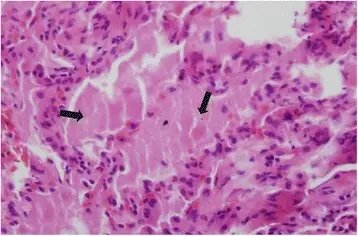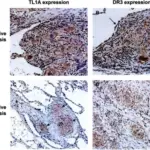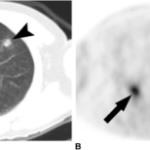Pulmonary alveolar proteinosis is rare chronic illness where distal airspaces of the lungs are filled with granular, PAS-positive, eosinophilic material with abundant lipid in it.
Examples of pulmonary alveolar proteinosis that cause restrictive lung diseases are:
- Autoimmune pulmonary alveolar proteinosis
- Hereditary pulmonary alveolar proteinosis
- Secondary pulmonary alveolar proteinosis
What is the Pathology of Pulmonary Alveolar Proteinosis?
The pathology of pulmonary alveolar proteinosis is:
-Etiology: The cause of pulmonary alveolar proteinosis is unknown.
-Genes involved: None.
-Pathogenesis: The sequence of events that lead to pulmonary alveolar proteinosis is unknown.
-Histology: The histology associated with pulmonary alveolar proteinosis shows the presence of homogeneous, granular, eosinophilic material which stains brightly with PAS.
How does Pulmonary Alveolar Proteinosis Present?
Patients with pulmonary alveolar proteinosis typically males are more affected than females, present at age range of 20-50years. The symptoms, features, and clinical findings associated with pulmonary alveolar proteinosis include dyspnoea, cough, chest pain, pyrexia, fatigue and loss of weight confluent. Areas of consolidation on a chest x-ray
How is Pulmonary Alveolar Proteinosis Diagnosed?
Pulmonary alveolar proteinosis is diagnosed through Imaging studies- Chest radiographs, X-rays, and CT scans.
How is Pulmonary Alveolar Proteinosis Treated?
Pulmonary alveolar proteinosis is treated through therapeutic whole-lung lavage.
What is the Prognosis of Pulmonary Alveolar Proteinosis?
The prognosis of pulmonary alveolar proteinosis is good on effective treatment.



